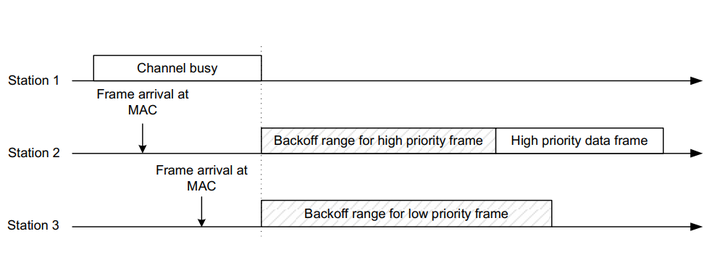A Survey of Medium Access Mechanisms for Providing QoS in Ad-Hoc Networks
 The backoff differentiation method of providing QoS
The backoff differentiation method of providing QoS
Abstract
In this survey we attempt to describe the Quality of Service (QoS) mechanisms employed by Medium Access Control (MAC) protocols designed for ad-hoc networks. We begin with background information: an overview of the related work, the definition of QoS and QoS-related metrics, a general description of contention-free and contention-based protocols for wireless networks, a discussion of issues affecting QoS provisioning in ad-hoc networks, as well as a novel classification of the QoS mechanisms. Then, each mechanism is briefly explained and implementation examples from different protocols are provided. Furthermore, a separate section is devoted to the completed and ongoing standardization work in the field. Afterwards, an extensive comparison of salient features, advantages and disadvantages of all described MAC mechanisms is given in order to guide future protocol designers. Finally, we comment on the most probable future research directions. Based on the presented survey, we observe that QoS provisioning is not only challenging but also a significant contemporary research problem. The protocol designs presented in the literature usually involve trade-offs between certain metrics, and currently there is no ideal solution which deals with all the issues affecting ad-hoc networks. Therefore, we trust that this survey will be of great help to designers of future QoS-aware protocols.